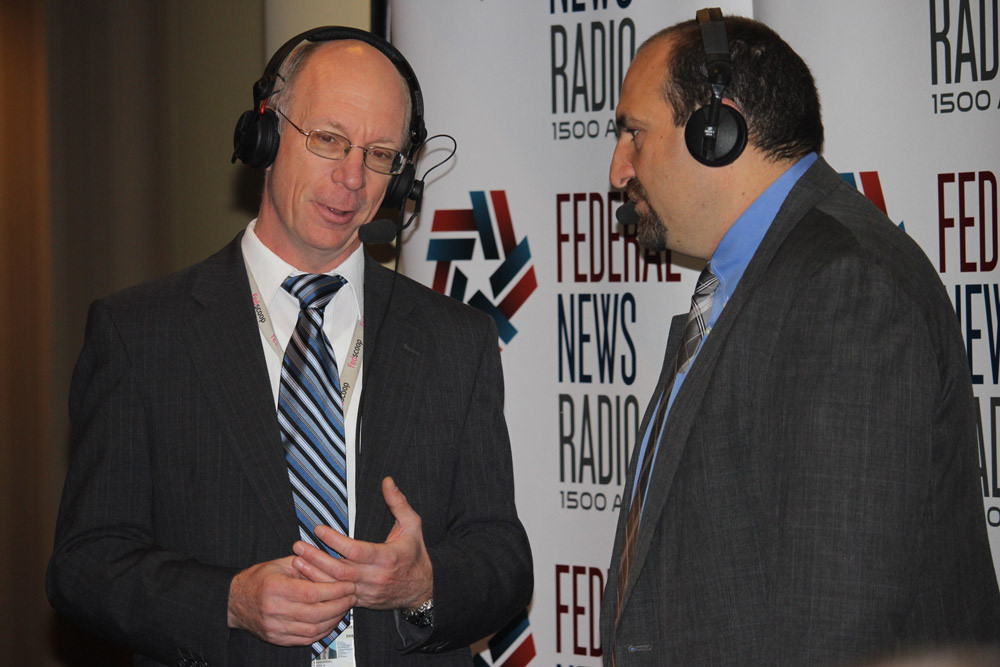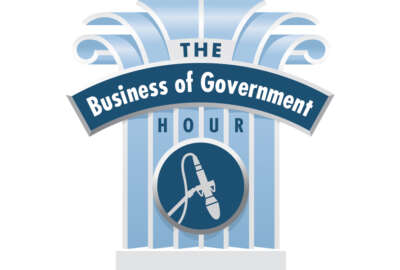
Hubbard Radio Washington DC, LLC. All rights reserved. This website is not intended for users located within the European Economic Area.
Hubbard Radio Washington DC, LLC. All rights reserved. This website is not intended for users located within the European Economic Area.
Among the uglier mass human-rights violations going on in the world today, is forced labor imposed on the Uyghur minority by China. Congress, in the Uyghur Forc...
Among the uglier mass human-rights violations going on in the world today, is forced labor imposed on the Uyghur minority by China. Congress, in the Uyghur Forced Labor Prevention Act, gave U.S. Customs and Border Protection (CBP) the job of gathering and publicizing where this forced labor exists in the worldwide industrial supply chains. To find out where the agency is in addressing the issue, Federal Drive host Tom Temin spoke with Eric Choy, the Executive Director for Trade Remedy Law Enforcement in CBP’s Office of Trade.
Interview transcript:
Tom Temin And what exactly is CBP’s job in this law, and generally, trying to stop the fruits of forced labor from entering manufacturers supply chains?
Eric Choy CBP has already had the requirements to stop the importation of goods produced with forced labor coming into the United States. This is already established. A federal statute under the Tariff Act, was recently under the Trade Facilitation Trade Enforcement Act In 2016, really unbound CBP’s authorities to prevent the importation or the entry into the U.S. commerce of goods produced forced labor into the United States. And with the passage of the Uyghur Forced Labor Prevention Act in late 2021, it created a rebuttable presumption which presumed that goods produced whole or in part from the Xinjiang region of China, is created with forced labor, therefore then prevents the entry. And so CBP is responsibilities under the Uyghur Forced Labor Prevention Act is to figure out which goods are coming from whole or in part from the Xinjiang region of China, and to prevent their entry into the commerce.
Tom Temin And what are the types of goods that tend to come from that region?
Eric Choy We know that as far as manufacturing goes from the Xinjiang region of China, that the [People’s Republic of China (PRC)] has moved a significant amount of energy intensive, as well as dirty industries that really go towards leveraging raw materials and kind of creating those inputs that are used in downstream manufacturing and production processes that ultimately end up in the goods that are further manufactured either in China or in third countries that end up in those goods that we consume here in the United States. And principally, if you think about those types of industries that are energy intensive, that take a significant amount of agricultural footprint, you’re looking at an electronic inputs, apparel, textiles, footwear, as well as industrial manufacturing materials.
Tom Temin Right. So it could be like metal ingots or lead bricks, that kind of thing.
Eric Choy That’s correct. Aluminum, cotton. We know that under the UFLPA, that there were specific commodities that were considered high priority. Those things that are specific in the statute identify cotton polysilicon based products as well as tomatoes and tomato plants.
Tom Temin And recently, CBP staged a forced labor technical expo to show off this. What happened at the Expo? Who went and what could they see there?
Eric Choy And there are significant amount of stakeholders when it comes to enforcing a prohibition on goods or labor. Certainly, first and foremost is industry, the manufacturers, the importers that are importing the goods. Then also, there are our stakeholders across the federal interagency, our stakeholders in the legislative branch, as well as civil society that all kind of have somewhat of a stake with regards to how we can all work together towards identifying those goods and preventing those goods from coming into the United States. And so the tech Expo is really designed for industry, the industry engagement. We know that in the face of forced labor enforcement, since 2016, a significant industry has been growing to help industry identify and exercise due diligence within the supply chain. These are leveraging things such as artificial intelligence, machine learning, as well as just looking at the types of data and the intelligence that’s out there that could help companies do this type of due diligence in their own supply chains. And so ultimately, from an agency perspective, when we look at those goods potentially produce of forced labor coming to the country, our hope is that companies in their own due diligence identify where those risks are overseas. And so this tech expo was really to showcase and give an opportunity for an industry to showcase the types of technologies that are being developed, types of methodologies, but then present that back to industry, to the trade stakeholders so they can conduct that due diligence. But there’s also a significant piece in this, is that understanding the gross atrocities that are occurring and why industry should care. And so, that’s why we had members from the federal interagency, as well as members from the Hill come and talk to the trade about how they can exercise due diligence, and why Uyghur Forced Labor Prevention Act is so important. And why working together to protect these goods from coming into the United States is so important.
Tom Temin We’re speaking with Eric Choy. He’s executive director for Trade Remedy Law Enforcement in the Office of Trade at the U.S. Customs and Border Protection. And the supply chains themselves can be complicated, because a lot of the materials you mentioned have distributors or they might be sold directly online through agents that’s hard to identify, through Amazon and so forth. And then industrial goods, they have distributors and sometimes multilevel distribution. Does that complicate the end buyer knowing that this is not something they should be buying?
Eric Choy It is incredibly complicated. We’ve seen how diversified a multinational supply chains have become over the last couple of decades. It is very difficult and we know that from an agency perspective. We know that exercising this due diligence, not only from industry’s perspective, but also across the federal Energy Agency, that it’s a difficult task. And that’s why we’re really focused on working together to do this. Identifying where the risk exists in supply chains is a significant part of this. Once goods are already presented for entry at one of our 228 ports of entry its technically too late. And so knowing where these risks are, knowing what the resources are available, and how that due diligence could be exercised before companies make purchasing decisions before goods ever hit the water is the important part. And so doing the due diligence to understand how the specific inputs within specific goods, at a specific tier within a supply chain, is really important. And now more than ever, not just for forced labor and social due diligence, but just also for good business practices. Understanding how to create predictability within supply chains and understanding when goods will be delivered on time is important for business. So this is a collective kind of effort working together to work on forced labor, due diligence, but also just good business practices.
Tom Temin And you also have a dashboard now online. I’m looking at it now that tells a lot about shipments and what types of materials could be coming from that region of China. How was that developed? And who do you expect to be tuning in to that dashboard?
Eric Choy So as I mentioned before, there’s a significant amount of stakeholders that are really interested in how the enforcement is going. One, it helps to provide predictability with regards to what types of goods and commodities are potentially being made from these supply chains that are linked back to the Xinjiang region of China. This dashboard is also CBP’s commitment to provide as much transparency to the trade and to all the various stakeholders for this enforcement, Uyghur Forced Labor Prevention Act. We are aggregating this data quarterly to provide awareness of how the enforcement is going, what goods are impacted, and what the ultimate outcome of those goods as those supply chains are being reviewed. And so we’re hoping that the dashboard itself will provide insight to all the various stakeholders to make good decisions on their own.
Tom Temin And China has a lot of regions. It’s a really big country geographically. How do we know that they’re not having things produced by the Uyghur’s in the forced labor areas, and simply shipped and date stamped or whatever from somewhere across China and leaving the country from that port?
Eric Choy That is a significant challenge. Again, the way that how a diversified and multinational these supply chains are, understanding where the risk is and where the risk may reside within any supply chain is the first step. The good news is that there’s a significant amount of resources out there for industry and for all stakeholders to know where the risks may begin. And once we understand where those risks are, then we can make conscious decisions of how we structure our supply chain. So across the federal, interagency, you have, and it’s not just the forced labor that’s occurring in the Xinjiang region of China, but also broadly globally around the world. The Department of Labor’s list of goods, which identifies countries and the goods and the commodities that are suspected of being made or produced with forced labor in child Labor. Department of State has a Trafficking in Persons report that it publishes annually every year, that talks about and categorizes and scores countries based on their human trafficking efforts, and where the conditions of human trafficking and forced labor may be. But then there’s also stuff can resources from civil society and academia that are actively looking at these conditions. We’re looking at the Xinjiang region of China that provide detailed information to anyone that’s interested of where these risks exist.
Tom Temin And do you get cooperation from the large manufacturers that have the resources to take on this challenge? The Apples, the the General Motors, the Nike’s, the Boeings, those types of companies?
Eric Choy For sure. Over the last several years, since CBP has really stepped up its enforcement on forced labor together with the Department of Homeland Security, we’ve seen a significant response, not only globally, around the world from like minded partners and countries, but also from industry. And so we see a significant shifts in supply chains where large companies, but also concerned companies are making changes to the supply chains and making changes to where they source goods. And to that being, with all the different capabilities and technologies that were showcased that are technology expo. We know that there are companies that are using these technologies and using these methodologies to inform their decision making. And we’re seeing it, we’re seeing changes.
Copyright © 2024 Federal News Network. All rights reserved. This website is not intended for users located within the European Economic Area.
Tom Temin is host of the Federal Drive and has been providing insight on federal technology and management issues for more than 30 years.
Follow @tteminWFED

